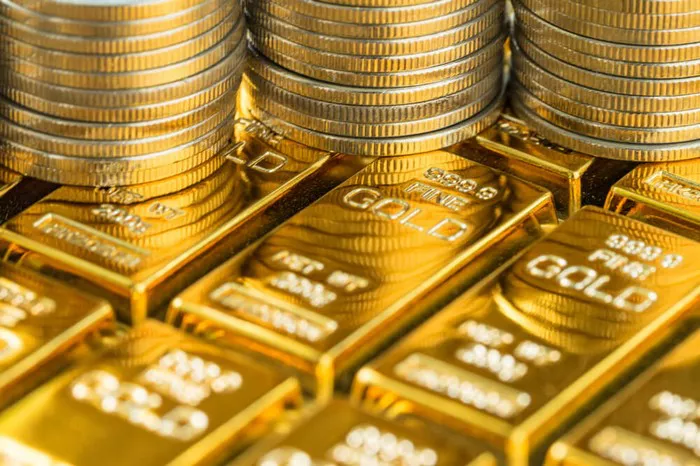Gold prices have surged to unprecedented levels in both international and domestic markets, fueled by recent interest rate cuts and escalating geopolitical conflicts. The combination of a significant reduction in U.S. interest rates and ongoing global tensions has created a perfect storm for gold, driving demand for the precious metal.
Interest Rate Cuts Weaken the Dollar
The U.S. Federal Reserve’s decision to cut interest rates by 50 basis points (bps) has played a crucial role in this gold rally. This cut, the first since 2020, has weakened the dollar and heightened investor interest in gold as a hedge against economic uncertainty. Analysts note that there is often an inverse relationship between the dollar and gold prices; as the dollar weakens, investors increasingly turn to gold for security.
Expectations of further rate cuts from the Federal Reserve have compounded this effect. Analysts suggest that additional cuts of 25 bps could be introduced in November and December, keeping pressure on the dollar and further enhancing the appeal of gold as a safe-haven asset.
Geopolitical Conflicts Drive Demand
In addition to economic factors, ongoing geopolitical tensions are significantly influencing gold prices. The recent clashes between Israel and Hezbollah, coupled with the protracted conflict between Russia and Ukraine, have unsettled global markets. As uncertainties rise, investors are seeking refuge in gold, which has long been viewed as a reliable store of value during times of crisis.
The heightened demand for gold in response to these conflicts is evident. On September 26, gold prices reached a historic high of $2,685.42 per ounce in the international market. In India, domestic prices also soared, with gold in Mumbai hitting ₹75,750 per 10 grams, while MCX Gold Futures for October approached ₹76,000.
Central Banks’ Gold Purchases
Another key factor driving gold prices is the ongoing purchasing activity by central banks around the world. Many central banks are actively acquiring gold as part of a broader strategy to reduce their reliance on the U.S. dollar in their foreign reserves. This trend has been amplified by U.S. sanctions on Russia, which have prompted countries to reevaluate their currency holdings and seek more stable alternatives like gold.
The ongoing accumulation of gold by central banks adds a layer of support to the market, reinforcing the belief that gold will remain a crucial asset in global finance.
Future Projections for Gold Prices
Looking ahead, experts anticipate that gold prices will continue to rise. The combination of potential further interest rate cuts by the Federal Reserve and persistent geopolitical tensions suggests that gold will maintain its status as a key asset in investors’ portfolios.
With analysts predicting additional cuts in the coming months, the stage is set for gold to capitalize on these economic conditions. The uncertainty surrounding international conflicts and the ongoing instability in various markets will likely keep investor interest in gold at a high level.
Conclusion
As gold prices hit record highs amid a backdrop of interest rate cuts and geopolitical conflicts, the precious metal’s status as a safe-haven investment is reaffirmed. The weakening dollar, coupled with increased demand from both individual investors and central banks, positions gold as a critical asset for those looking to safeguard their wealth in uncertain times. With expectations of further interest rate reductions and ongoing global tensions, gold is poised to remain a focal point for investors well into the future.
Related topics:

